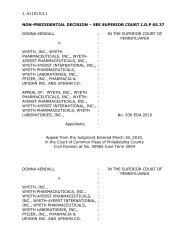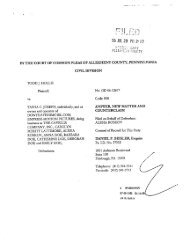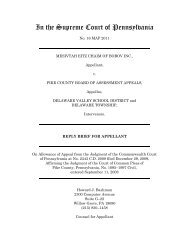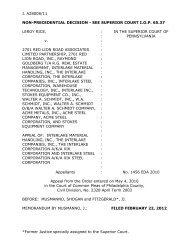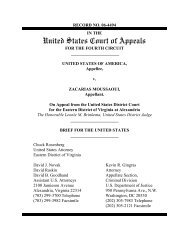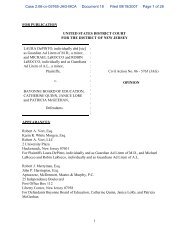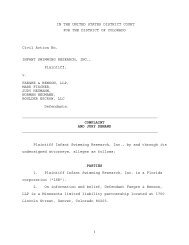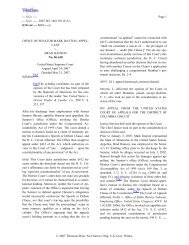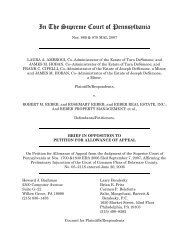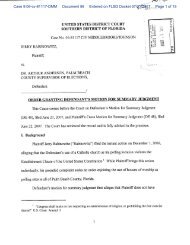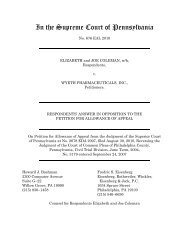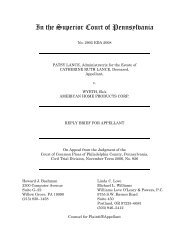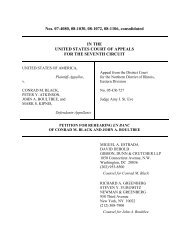Stone v. Bear, Stearns & Co., Inc. - How Appealing
Stone v. Bear, Stearns & Co., Inc. - How Appealing
Stone v. Bear, Stearns & Co., Inc. - How Appealing
You also want an ePaper? Increase the reach of your titles
YUMPU automatically turns print PDFs into web optimized ePapers that Google loves.
authority of the panel under 9 U.S.C. § 10(a)(4). This argument has some logical appeal but fails for<br />
several reasons. 11<br />
Case 2:11-cv-05118-LDD Document 22 Filed 05/29/12 Page 24 of 35<br />
First, the Third Circuit has recently delineated the categories of conduct that may suffice for a<br />
court to vacate an award as in excess of the arbitrators’ powers, namely “when [an arbitrator] [1]<br />
decides an issue not submitted to him, [2] grants relief in a form that cannot be rationally derived<br />
from the parties’ agreement and submissions, or [3] issues an award that is so completely irrational<br />
that it lacks support altogether.” Sutter, 675 F.3d at 219-20. <strong>Stone</strong> has not argued that the<br />
arbitrators’ conduct here falls within any of these three categories, and plainly it does not. The three<br />
arbitrators in this case decided the issues submitted to them and unanimously denied <strong>Stone</strong>’s claims,<br />
an outcome the parties’ must have envisioned when agreeing to arbitrate the dispute (given that <strong>Bear</strong><br />
<strong>Stearns</strong> sought this form of relief; that is, no relief at all for <strong>Stone</strong>).<br />
Second, in this circuit, so long as an arbitrator makes a “good faith attempt” to comply with<br />
his or her mandate, “even serious errors of law or fact will not subject [the arbitrator’s] award to<br />
vacatur.” Id. at 220 (citation omitted). On this record, we conclude that Marston in particular, and<br />
the three-person arbitration panel in general, made just such a good faith attempt. Even assuming<br />
that FINRA’s rules constitute a contract between the parties to a FINRA arbitration, Marston tried to<br />
comply with FINRA’s conflict disclosure rules by, e.g., disclosing her husband’s business dealings to<br />
FINRA (twice) and asking her husband if he had previously worked for Respondents in this case.<br />
Further, the panel undoubtedly acted in good faith with respect to FINRA’s rule on panel composition<br />
11<br />
Respondents hotly dispute <strong>Stone</strong>’s contention that Marston was not qualified to sit as a<br />
public arbitrator. (See Doc. No. 20-3, at 30-32). We have reviewed the parties’ respective arguments<br />
and conclude that the issue turns on such interpretive nuances as whether we should quantify the<br />
closeness of Dr. Marston’s relationship to the securities industry in terms of time spent or money<br />
earned. We need not resolve this particular disagreement because we hold that the circumstances do<br />
not warrant vacatur under Section 10(a)(4) even if FINRA improperly designated Marston as a public<br />
arbitrator.<br />
24



